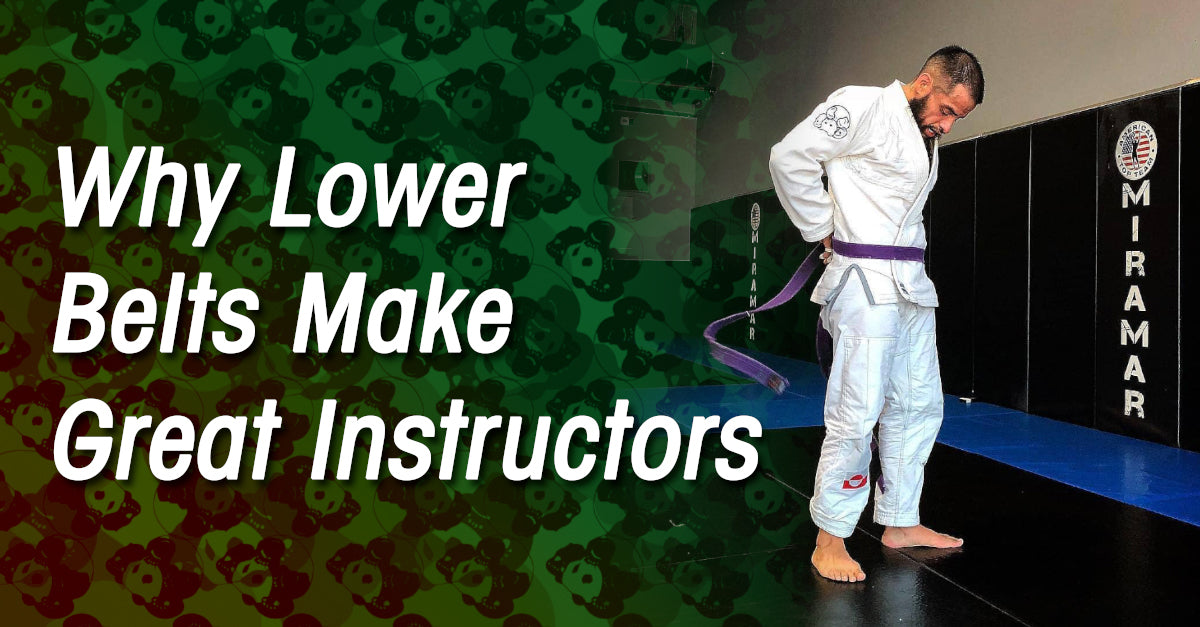
Why Lower Belts Make Great Instructors
Typically, I do not deviate from my training schedule. Rain or shine, happy or glum, rested or battered—I show up to teach and to sneak in some time for my own drilling. In the last two months, however, I have had to travel for business week after week, and I have missed a lot of classes.
In my stead, my lower belts—purples and blues—stepped up to cover teaching.
Though our students are kind and supportive in these situations, I have trained in other places and have seen forum posts that look down on lower belt instructors. And I get it. When you sign up for a class, you want to learn from the best person on the mat. You want someone with experience and who has a deep understanding of how to teach a complex art like jiu-jitsu. When you walk into the room expecting a high-ranking belt to run the session, seeing a blue belt bow people in can be disappointing.
While I don’t think a blue belt should teach every class ever, I am a firm believer that having lower belts mix into teaching roles is valuable for everyone involved—the lower belt instructor, the other students, and the head instructor.
Here’s why:
- For the lower belt instructor, covering classes periodically is a new kind of challenge that is different from a workout or a competition. Teaching forces you to think about technique more deeply, but more importantly, it makes you think more about how the students in your class think and learn. This blend of interpersonal practice, leadership development, and the technical challenge of verbalizing something very physical is a powerful way to improve on many fronts at once. The mistake for everyone (instructors as well as their students) is waiting too long to start this development, which is why so many high-ranking instructors are poor teachers.
- For the other students, taking a class from a peer is still valuable. With the rise of jiu-jitsu travel and readily available instructional content, it is very likely that the blue belt you train with every day has seen techniques you have not. Even if you are technically the same rank (or even if you outrank him or her), that person has something to share that could change your game, but you have to be willing to listen and learn to get that reward.
- For the head instructor, no man or woman is an island. A durable jiu-jitsu program cannot survive on the back of any one person. A team needs to grow new leaders so that as the school expands there are people who can step in that are not only technically skilled but also have the mindset of a patient teacher. If a jiu-jitsu program is not building up new people in this way, the culture of the gym will stagnate.
Though you likely have little control over when you will get the chance to cover a class or to decide, as a student, who will be teaching on a given day, we do have control over how we treat and think about lower belts teaching classes. If you show up and a purple belt is covering, don’t immediately discount the value of that class. Be just as engaged as if you were learning from a black belt, and perhaps offer a kind word to the purple belt instructor afterward.
Other articles:
Quick links
Contact us
About us
Quality BJJ gear at fair prices, available all year. Founded in 2012 to provide an alternative to high-cost, limited edition gis. Dive into the BJJ lifestyle with us—join the Panda Nation!"
